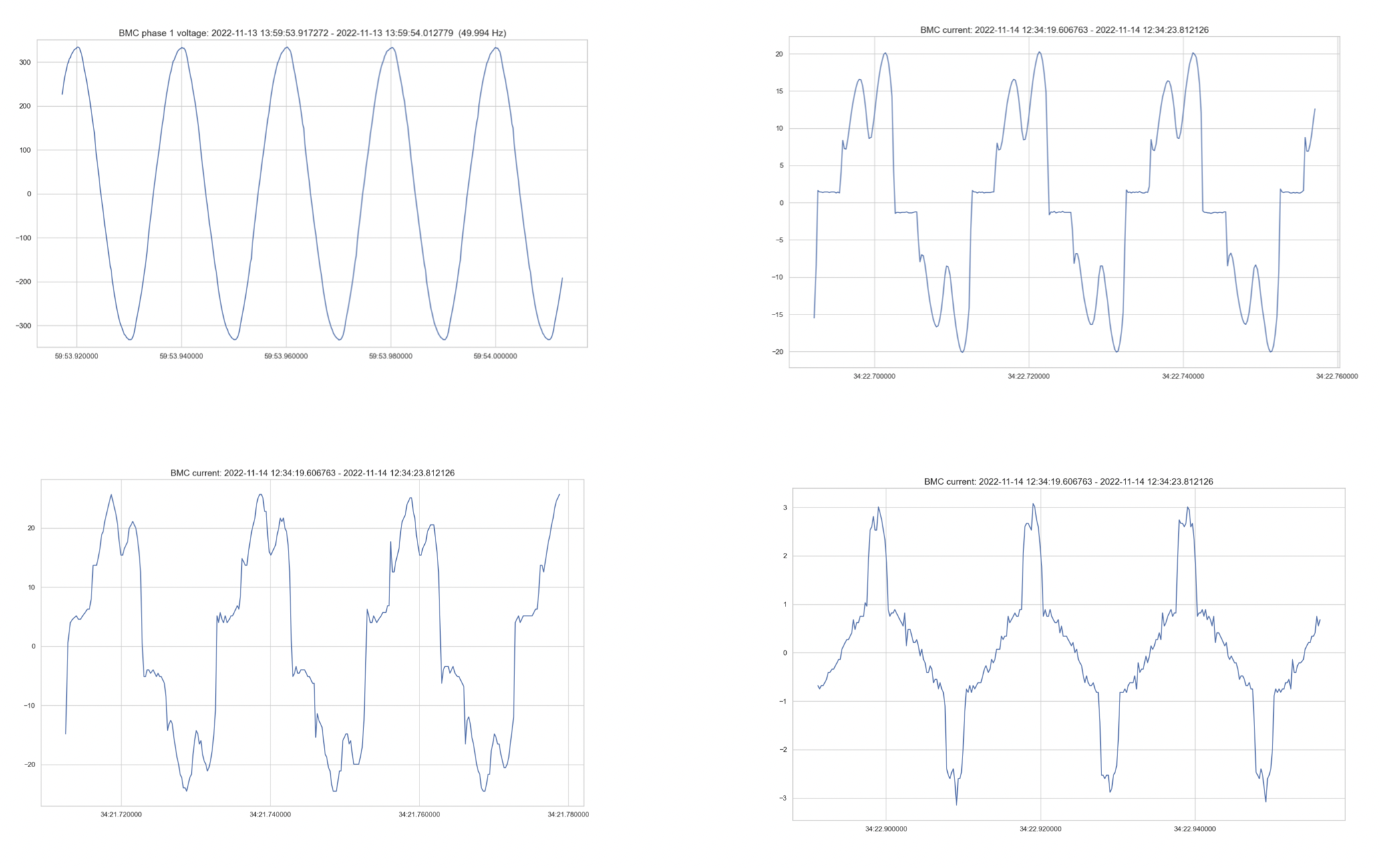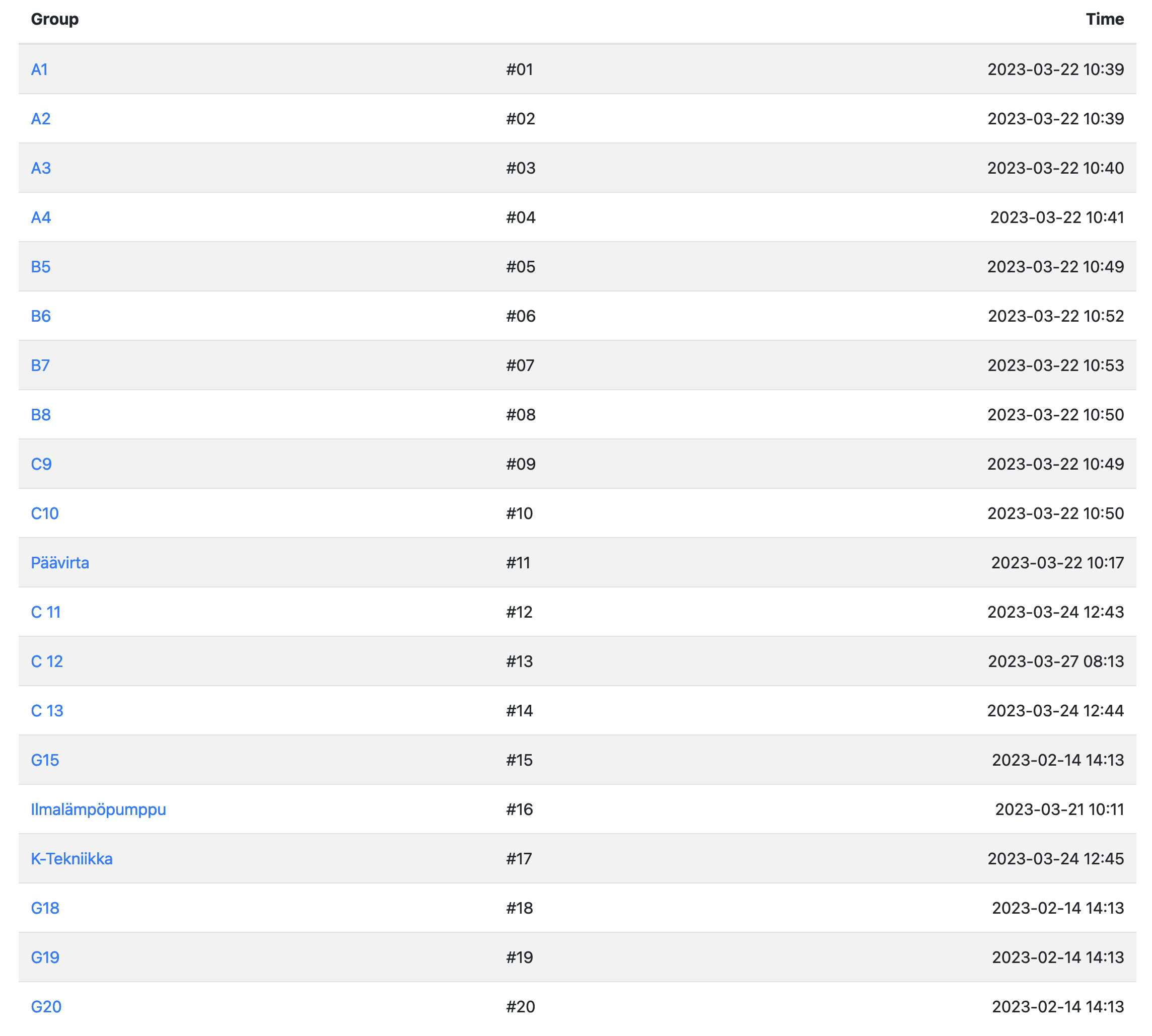Measurement
Electricity measurement is the practice of monitoring and recording energy usage in buildings and facilities. Accurate measurement of energy consumption is important for effective energy management, cost optimization, and identifying areas for improvement.
Buildlink electricity measurement solution utilizes an innovative submetering system and is complemented by a multi-level IoT and SaaS software platform (Edge-Fog-Cloud).
Measurement units
Buildlink measurement center (BMC) consists of multiple sensors that can be placed at different locations within the system, along with a central unit that collects and processes the data from each sensor (Current and Voltage transformers).
BMC device is designed to provide accurate and real-time data on electrical parameters such as voltage, current, power, and energy consumption at different points in the system. This information can be used to monitor and optimize the performance of the system, identify potential issues, and improve efficiency.

Current
Current transformer type should be chosen to ensure that the output current is within the measurement range of the measuring instrument.
Supported measurement ratios are 5A, 20A, 30A, 50A, 100A, 250A, 400A and 500A but custom ranges are also possible. For “wrong” range problems and challenges may exist if transformer ratio is too far from practical measurements.
Voltage
Voltage transformers are optimized in voltage range 220 to 240 volts. To optimize the transformer for this voltage range, the number of turns in the secondary coil is adjusted so that the output voltage is as close as possible to the desired level, typically around 12 volts or 24 volts. The transformer is also designed to efficiently handle the power demands of typical electrical devices in this voltage range.
Power
Electrical power can be measured in different ways, such as in volt-amperes (VA), watts (W), and volt-ampere reactive (VAR). VA measures the apparent power that is delivered to a system, while watts represent the real power that is consumed by a system. VAR, on the other hand, measures the reactive power that is exchanged between the system and the load.



Measuring three-phase electricity with fragments
When measuring power consumption, it is important to consider whether the system is single-phase or three-phase. In three-phase systems, measuring all three phases is necessary to accurately monitor total power consumption.
In three-phase electrical systems, electricity measurement is often conducted by summing the power consumption of each phase (L1, L2, and L3). By doing so, it is possible to accurately monitor the total power consumption of a building or facility. This information is critical for optimizing energy usage, identifying inefficiencies, and reducing overall energy costs.
Measuring all phases differentially in a three-phase electrical system offers several benefits, including increased accuracy, improved fault detection and diagnosis, better load balancing, and increased efficiency in energy consumption. By measuring the voltage and current in each phase, it is possible to calculate power consumption and detect any imbalances or faults in the system.
Time series
Electricity time-series data and views offer valuable insights for energy management. Time-series data refers to a collection of energy consumption data points that are recorded over a period of time. This data can be used to generate different views of energy consumption patterns.
BMC Time-series categories can be grouped by time scale, such as real-time monitoring, hourly or daily analysis, weekly or monthly analysis, and annual or seasonal analysis. Each time scale provides a different level of detail and can be used to identify energy usage patterns and opportunities for improvement at different levels of granularity. Custom time scales can also be selected, ranging from the start to end time.

Waveform measurement
BMC electricity measurement involves measuring parameters such as voltage, current, power, and energy consumed in an electrical system. Waveform analysis involves examining the shape and characteristics of electrical signals over time. In a 20 ms period, these measurements can provide insights into the quality of the electrical supply, the efficiency of the system, and potential issues such as harmonic distortion or voltage sags. High-frequency sampling is often required for accurate waveform analysis, and specialized equipment such as oscilloscopes or power quality analyzers may be used for this purpose.

Measurement accuracy
The accuracy of electricity measurement is affected by several factors, including the accuracy of current and voltage measurements and device-based errors. Accurate measurement of both current and voltage is important for calculating the true power consumption, and device-based errors can introduce inaccuracies in the measurement process. Regular calibration of measuring equipment and use of high-quality devices can help ensure accurate electricity measurement.
The accuracy of electricity measurement can vary based on factors such as the current measurement range, type of current transformer used, and the method of measurement employed.
The Measuring Instruments Directive (MID) is a set of regulations established by the European Union to ensure the accuracy and reliability of measuring instruments, including those used for electricity measurement. The MID sets standards for the design, construction, and testing of measuring instruments, and requires that these instruments meet specific accuracy requirements. Compliance with the MID is mandatory for instruments used for legal metrology purposes, such as billing for electricity usage.
Submetering is a measurement approach that is implemented in an area where the energy consumption has already been measured by a master meter, therefore compliance with the MID directive is not typically a concern.
Measurement process
Edge, fog, and cloud computing are three approaches to processing and storing data in the context of electricity measurement.
Edge computing involves local processing of data at the source, such as a sensor or meter. This can improve response times and reduce network congestion by reducing the need for transmitting large amounts of data to a central location for processing.
Fog computing involves processing data at an intermediate layer between the edge and the cloud, typically within the local network. This can be used to aggregate data from multiple sources before transmitting it to the cloud for further processing.
Cloud computing involves processing data in a centralized data center, typically over a network connection. This provides virtually unlimited computing power and storage capacity, and can be used for advanced analytics and machine learning applications.
BMC consumption map
The BMC consumption map provides a comprehensive overview of the electricity assets/resources that are linked to the measurement center.

Addentum: Units used
| Unit | Description |
|---|---|
| Current (I): | Current is the flow of electric charge in a circuit. It is typically measured in amperes (A). |
| Voltage (V): | Voltage, also known as electric potential difference, is the measure of the electric potential energy per unit charge in an electrical circuit. It is typically measured in volts. |
| Power | Power is the rate at which energy is transferred in an electrical circuit. It is typically measured in watts (W) or kilowatts (KW). |
| Energy | Energy is the amount of work done in an electrical circuit. It is typically measured in watt-hours (Wh) or kilowatt-hours (kWh). |
| Frequency (f): | Frequency is the number of cycles of a waveform that occur in one second. It is typically measured in hertz (Hz). |
| Power factor (PF): | Power factor is the ratio of the real power to the apparent power in an electrical circuit. It is typically measured as a decimal value between 0 and 1. |
| Harmonics | Harmonics are the result of non-linear loads, they are higher-order sine waves that are present in the current or voltage waveforms in an electrical circuit. They can be measured by a variety of methods, such as Fourier analysis or using a power quality analyzer. |
| Integration data | Data can also be used in conjunction with electricity consumption data, like temperature, humidity, wind, solar radiation and so on. This data can help to understand the relationship between the consumption and the environmental factors. |
Table: BMC electrical measurement units and information attributes that are used to quantify and describe electrical systems